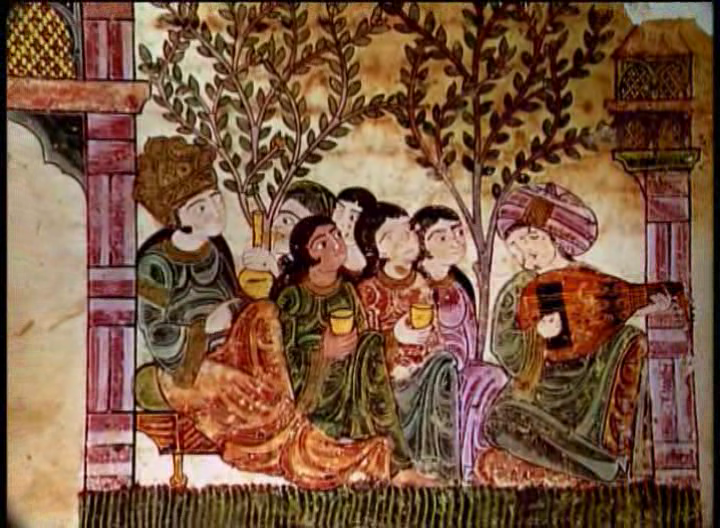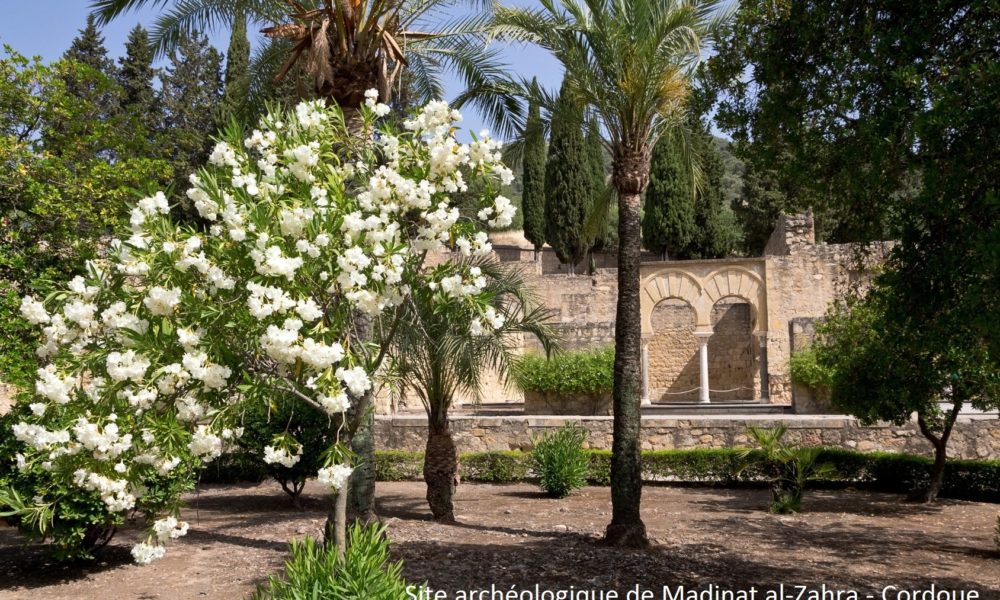
950 AD to 970 AD, Psalm 95: Hasdai Ibn Shaprut.
This site was first built in French (see www.147thgeneration.net). The English translation was mainly done using « google translation ». We have tried to correct the result of this translation to avoid interpretation errors. However, it is likely that there are unsatisfactory translations, do not hesitate to communicate them to us for correction.
(for that click on this paragraph)
Summary
This generation is from the years 950 AD to 970 AD.
According to our count, this generation is the 95th generation associated with Psalm 95. It is in this Psalm 95 that we therefore find an illustration of the facts of this generation.
In Andalusia, it is the reign of Hakam II. The time of al-Hakam marks the culmination of the period of peace and prosperity of the caliphs of Cordoba, is also one where we see at the head of the great Muslim state of the West one of the most cultured princes and the most passionate about science, literature and the fine arts of the Arab world in the Middle Ages.
In Andalusia, almost everyone could read and write while in Christian Europe the most senior people, unless they belonged to the high clergy, did not know it. Although the schools were good and numerous the caliph founded in the capital twenty-seven schools for the poorest classes.
This profusion of culture in Muslim Spain is an opportunity for the development of European Judaism that is used, especially thanks to Hisdaï ibn Shaprut which promotes the emergence of this new Judaic culture. He did for his people what the caliph had done for Spain, he brought him art and knowledge.
The religious life of the Jews was booming at the very moment when, as a result of the closure of the Babylonian schools, it was believed to be extinct forever. She only changed countries. Transplanted from the banks of the Euphrates in Europe, it gradually stripped its eastern forms to take a sort of European character.
During this generation, if it is possible that life is not completely rosy for all the Jews of Cordova, life may never have been so sweet and promising for the Jews during their long exile. They are not hunted down and live freely in a country of plenty. Jewish elites have a special relationship with power and do not forget to be concerned about the good of their community.
The parenthesis opened by Hakam II is not to be eternal, Cordoba will fall in 1010 with the fall and the sacking of the Madinat Al Zahra palace to disappear completely at the end of the siege led by the Berbers in 1013. Almost no vestige of Cordoba has stood the test of time, and hardly any book in the great library has escaped destruction.
Talk
Hakam II
In the West, this generation is that of the birth of the Holy Roman Empire in 962. This date marks the beginning of the 1st Reich much better oriented towards the Jews than will later be the third, at least in its infancy. In particular, the royal attributes are largely inspired by those of Jewish kings such as David and Solomon.
In Andalusia, this generation is that of the pursuit of the Caliphate of Abd Abd al-Rahman III (912-961). It is his son Al Hakam II (961-976) who succeeds him:
- Rarely [1] a sovereign will have left to his successor a country so prosperous, so protected from his enemies, as glorious as the one that inherited, on October 15, 961, the mature man who was al-Hakam II al-Mustansir billah ( name which means « he who seeks the victorious help of Allah »).
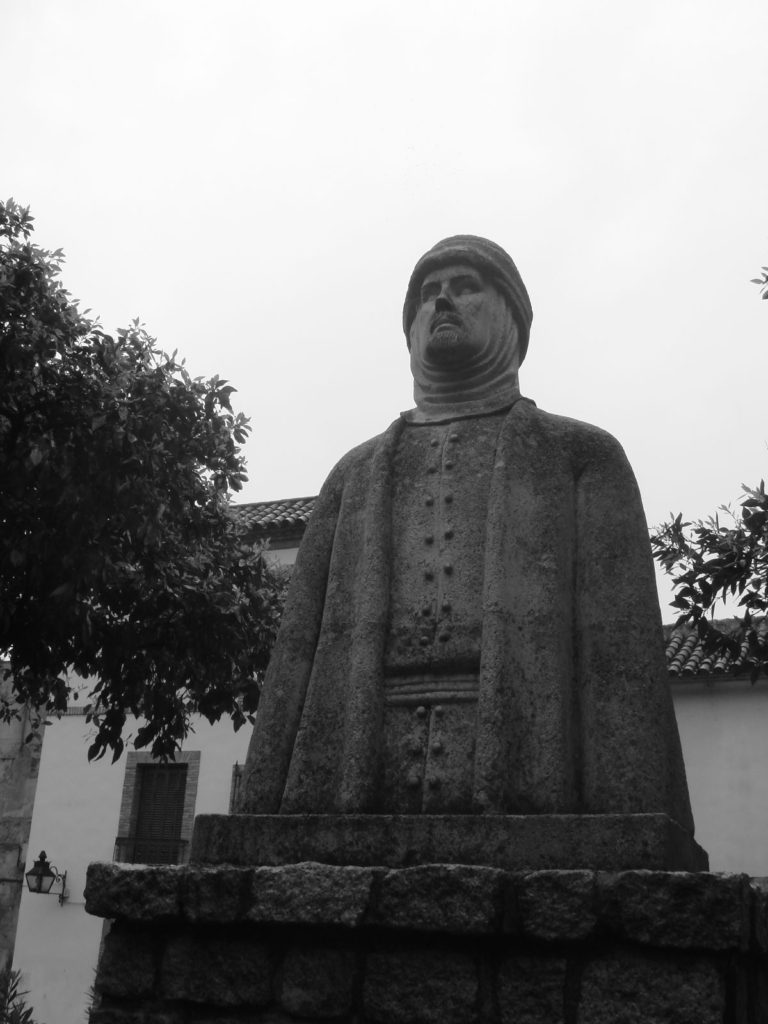
- Like his father’s reign, that of Hakam II remained, in the history of Muslim Spain, as a period of peace, stability and greatness. With his mighty army, he could not be attacked by Christian kings and princes who sought rather his friendship, sometimes his support, to triumph over their rivals. […]
- The time of al-Hakam, which marks the culmination of the period of peace and prosperity of the caliphs of Cordoba, is also one where we see at the head of the great Muslim state of the West one of the most cultured princes and the most passionate about science, literature and the fine arts of the Arab world in the Middle Ages, « the most literate of the Andalusian caliphs ».
- His predecessors, Abd Ar Rahman II and Abd Ar Rahman III, were far from being uneducated men, both of whom were heavily influenced not only by Baghdad’s system of government, fashions and manners, but even more so. undoubtedly by the example that the Abbasid caliphs gave protectors of culture in all its forms. […]
Profusion of culture
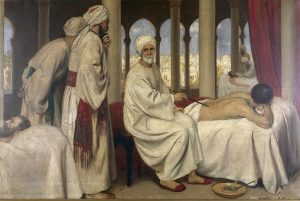
- But in the time of Hakam II, this rush to knowledge reached its peak, under the protection of the caliph himself, who had been fortunate enough to come to power in the old age, and his father, who had quickly understood his exceptional gifts, had surrounded the most learned professors in all branches of knowledge. He had also made sure that his entourage was composed of the most learned men. Most designed to develop in a young man the love of science, all sciences, history to medicine, law and the Koranic sciences. Muslim Spain had the unparalleled chance of being the man with encyclopaedic knowledge, a very generous patron, a veritable well of science comparable to the great scholars of the Renaissance era. « Never before had such a learned prince ruled Spain. »
- This penchant for study and knowledge, of which there are few examples among the rulers of his time – other times too – had left a trace with the immense library which he assembled in Cordoba, at the Alcazar same. Made up, it is said, of 400,000 volumes (probably more symbolic than real), it contained all the works that could be assembled at that time, whether religious or secular. […] In Andalusia, almost everyone could read and write while in Christian Europe the most senior people, unless they belonged to the high clergy, did not know it. Although the schools were good and numerous the caliph founded in the capital twenty-seven schools for the poorest classes.
This profusion of culture in Muslim Spain is an opportunity for the development of European Judaism that is used, especially thanks to Hisdaï ibn Shaprut which promotes the emergence of this new Judaic culture:
- In the 10th century [2], the Cordovan caliph’s court housed a host of poets and scientists who wanted to show their production to their protector and win his favors. It is in this oriental world of great wealth, under the sun of southern Spain, that Hisdai ibn Shaprut evolved. He did for his people what the caliph had done for Spain, he brought him art and knowledge.
- At the head of the Academy of Cordoba he appointed a scholar who was also the chief rabbi of the Jews of Spain. This Moses Ben Hanoch was traveling in the Mediterranean, leaving his community in southern Italy, when his boat was captured by pirates, then taken over by the caliph’s fleet. When Hisdai ibn Shaprut learned of the presence of a Jewish scholar on the soil of Spain, he sent for him to Cordova. He saw immediately that this man possessed immense knowledge, and he convinced him to stay.
- The presence of this scholar transformed the entire community of Jews in Spain. He was of such stature that it was no longer necessary to turn to the Babylonian geonim to settle matters of Jewish law. […]
- Hisdai ibn Shaprut encouraged poetry, philology and the study of the text of the Bible. A number of outstanding Arab philosophers lived and worked in Cordoba. The attraction for the Koran and its language had given rise to a new interest in the Arabic language and its structure. In Christian Europe, at that time, thinkers were discussing theology, in Cordoba the Arabs were discussing linguistics.
- The Jews were caught by this new enthusiasm for words and grammar. A man named Menahem ben Saruk, born in northeastern Spain, had discovered an interest in Hebrew philology and Bible commentary. [was employed as the poet of the rich brother of Hasdai ibn Shaprut]. On great occasions, the poet recited his works, then [became secretary of Hasdai ibn Shaprut] he wrote a dictionary of Hebrew which was at the origin of philological studies in Spain.
- The Jews of Spain did not only appreciate the scientific study of language, they also liked its use in poetry, and this taste had been inspired by the Arabs. The poems seemed to be animated by a life of their own, traveling magically through time and space.
Blossoming of a European Judaism
This evolution allows the emergence of a European Judaism:
- After [3] the disappearance of the branch of the Carolingians in Germany, at the moment when, in Christian Europe, the last ray of intellectual life was extinguished under the increasing darkness of the Middle Ages, Jewish civilization shone with a very bright shine. While the high dignitaries of the Church and the ignorant crowd were in agreement to condemn all scientific research as a diabolical work, the leaders of the Synagogue encouraged, on the contrary, the people to educate themselves. For three consecutive centuries, Jewish doctors were, for the most part, the principal promoters of education. The movement which developed at that time, among the Jews, with such remarkable intensity, was especially due to two scholars, of whom one lived in the East and the other in the West; it was Saadia in Sura and Hasdai in Spain. With the appearance of these two eminent minds begins, in Jewish history, a new era, which can be described as scientific. It was for Judaism as a new spring, a time of youth and activity, during which poetry made its gay and melodious accents. Before this intellectual awakening, we quickly forgot the fall of the exilarquat. Already a first time, after the destruction of the first temple and the cessation of the worship of sacrifices, a new religious life had flourished in Israel on ruins. Now, again, the religious life of the Jews was booming at the very moment when, as a result of the closure of the Babylonian schools, it was believed to be extinct forever. She only changed countries. Transplanted from the banks of the Euphrates in Europe, it gradually stripped its eastern forms to take a sort of European character. Saadia is the last representative of Jewish civilization in the East. Hasdai and the other scholars who formed at his school were the first promoters of a Judeo-European civilization.
It is this coming of a new enlightened Judaism that the beginning of this generation’s psalm recounts in the style of poetry:

- Come, let us sing praises to the Lord; let us shout to the rock of our salvation.
- Let us greet His presence with thanksgiving; let us shout to Him with songs.
- For the Lord is a great God and a great King over all divine powers.
Sancho I of León
Hasdai, thanks to his medical skills, obtains angelic diplomatic successes for his protector. Toda, who wants his grandson to lose weight in order to recover his throne, asks for help from Abd Ar-Rahman who sends him Hasdai ibn Shaprut. Hasdai decides to treat him in Cordoba. Toda, by the persuasive qualities of Hasdai accepts its conditions, despite the many struggles that had opposed earlier against Muslim soldiers:
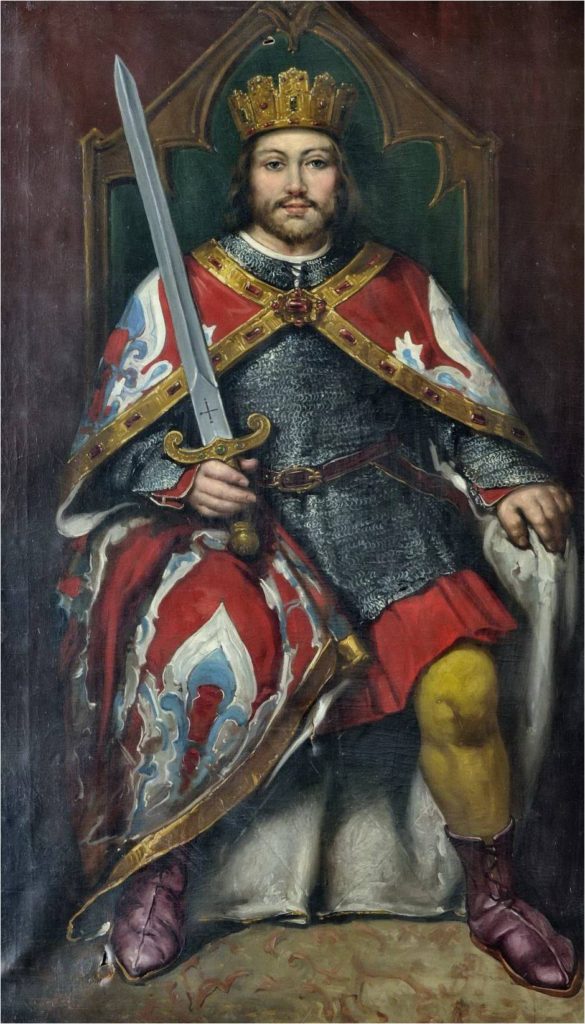
- In 958 [4], a slow caravan of Navarrese clerics and horsemen led by the queen and her grandson crossed the deserted regions of the northern frontier and traveled to Cordoba, following the ancient Roman roads. When they entered the city, Sancho I of León walked on the basis of Hasdai ibn Shaprut. For Abd Al-Rahman, the fact that two Christian kings come to his palace to bow before him asking for his help carried his pride to heights and perhaps represented the fulfillment of an intimate vengeance, a will to possess and submit that never would be satiated.
- For the Jews of Cordova, the most important thing was that the mediator of this negotiation would have been one of them, and when they saw Hasdai in the procession advancing towards Madinat al-Zahra on a carpet-covered path, they supported with a certain enjoyment that the merit and triumph of their co-religionist raised them all and tempered the immemorial beasts of the diaspora. « Greet, mountains, the leader of Judah! Wrote a Jewish poet on this occasion, that the smile appears on all the lips, that sing the dry lands and the groves, that the deserts rejoice! As long as he was not here, the proud ones dominated us, bought us and sold us as slaves, roared like lions, and we were terrified because we were missing our defender … God gave it to us as chief, it was He is the one who put him in the favor of the king, who called him prince and placed him high on the summits. Without arrows and without swords, thanks to his only eloquence, he has removed cities and fortresses from the abominable hog-eaters … «
- Although he is a little paranoid, this Jewish poet tells a truth: in exchange for the severe and devastating slimming diet that Hasdai ibn Shaprut imposed on him, and that included morning races all around Madinat al Zahra, Sancho I of León, then rid of his infamous nickname and restored to his throne thanks to the Andalusian armies, gave the caliph ten strongholds and remembered until the end of his life the friendship of this Jewish doctor who seemed to know everything about all things and who Guided by letting him lean on his shoulder, when fatigue suffocated him, to reach the very center of a palace whose rooms seemed to him as innumerable as the soldiers who guarded the road to Cordoba to Madinat al Zahra, and that the successive thresholds of his fifteen thousand gates.
The continuation of the psalm resumes the enthusiasm of this Jewish poet. He interprets the greatness of Cordoba as due to divine providence in order to be, on the Andalusian kingdom spared from all threats, open to science and culture, a land of predilection for the development of Spanish Judaism, then European:

- In Whose hand are the depths of the earth, and the heights of the mountains are His.
- For the sea is His, He made it, and His hands formed the dry land.
- Come, let us prostrate ourselves and bow; let us kneel before the Lord, our Maker.
- For He is our God, and we are the people of His pasture and the flocks of His hand, …
Parenthesis in exile
During this generation, if it is possible that life is not completely rosy for all the Jews of Cordova, life may never have been so sweet and promising for the Jews during their long exile. They are not hunted down and live freely in a country of plenty. Jewish elites have a special relationship with power and do not forget to be concerned about the good of their community.
Despite this, as sweet as the Andalusian episode, it remains exile, as it was in Egypt. The Jews could not stay forever in Egypt, they had to cross the desert to reach the promised land. Similarly, Spain is not the final destination of the Jewish people.
In fact, the parenthesis opened by Hakam II is not eternal, his ensured male succession leads to the loss of Cordoba, which begins to fall forty years later (1010) with the fall and the sacking of the Madinat Al Zahra palace. to disappear completely at the end of the siege led by the Berbers in 1013.
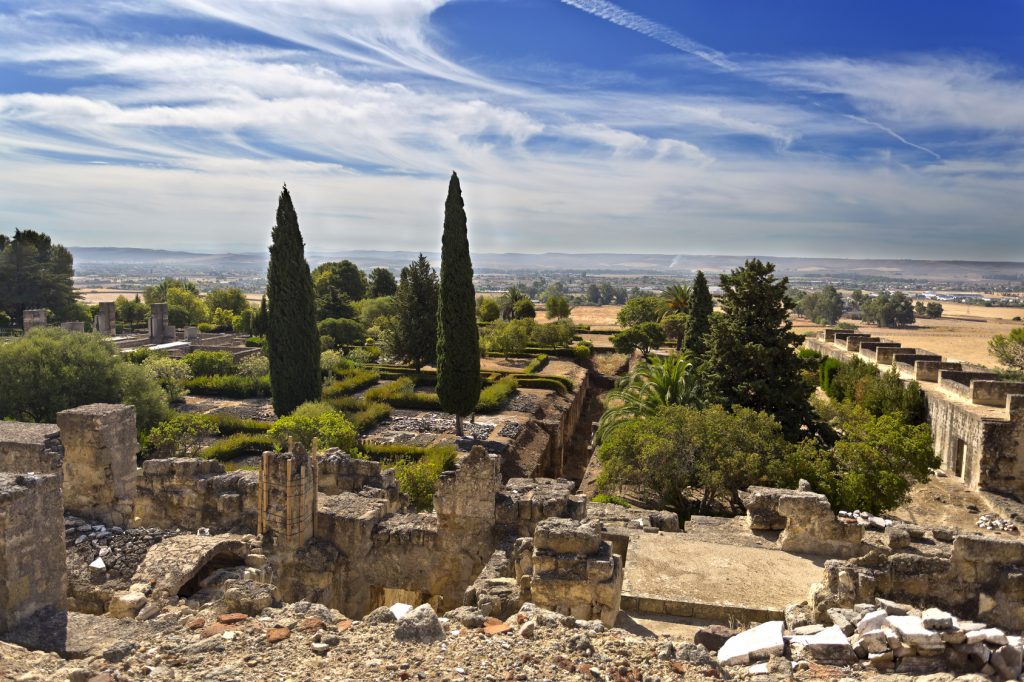
Virtually no remnants of Cordova have gone through time, and from the great library almost no books have escaped destruction. The Jews will have to resume their wanderings until they find their way back to the promised land. Even if the Andalusian episode remains in the Jewish collective memory as a climax, it must not fill the following generations with bitterness that will go through less comfortable times.
It is on this warning that the psalm of this generation concludes:

- … , today, if you hearken to my voice.
- Do not harden your heart as [in] Meribah, as [on] the day of Massah in the desert.
- When your ancestors tested Me; they tried Me, even though they had seen My work.
- Forty years I quarreled with a generation, and I said, « They are a people of erring hearts and they did not know My ways. »
- For which reason I swore in My wrath, that they would not enter My resting place.
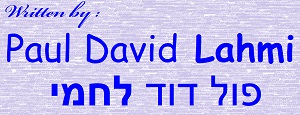
[1] André Clot: « Muslim Spain ». Chapter: « The Caliphate ». (French: « L’Espagne musulmane ». Chapitre : « Le Califat ». (p. 129à 137, extraits) ).
[2] Chaim Potok: « A story of the Jewish people ». Chapter: « Islam: Nightingales in the Sandstorm » (French: « Une histoire du peuple Juif ». Chapitre : « L’Islam : les rossignols dans la tempête de sable » (p. 417-418) ).
[3] Henri Graetz: « HISTORY OF THE JEWS / THIRD PERIOD – DISPERSION ». Second epoch – Science and Jewish poetry at their peak. Chapter 1 – Saadia, Hasdai and their contemporaries (928-970). (French: Henri Graetz : « HISTOIRE DES JUIFS / TROISIÈME PÉRIODE — LA DISPERSION ». Deuxième époque — La science et la poésie juive à leur apogée. Chapitre premier — Saadia, Hasdaï et leurs contemporains (928-970) ).
[4] Antonio Munoz Molina: « Cordoba of the Umayyads ». Chapter: « The Doctor of the Caliph » (French: « Cordoue des Omeyyades ». Chapitre : « Le médecin du Calife » (p. 145-146) ).

